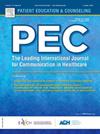Lessons from COVID-19 for sexually transmitted infections: Listening and learning from young adults and healthcare providers on sexual health communications dynamics and decisions in four states
IF 2.9
2区 医学
Q2 PUBLIC, ENVIRONMENTAL & OCCUPATIONAL HEALTH
引用次数: 0
Abstract
Objectives
To learn how the COVID-19 pandemic response could shape public health messaging for sexually transmitted infections (STIs), researchers conducted qualitative interviews with young adults in demographic groups experiencing disparate rates of STIs and healthcare providers in California, Florida, Louisiana, and Missouri.
Methods
Between October 2020 and October 2021, researchers interviewed 55 young adults and 49 providers about COVID-19 and STI information sources, perceived risk, and messaging. Young adults included Black/African American gay, bisexual, or other men who have sex with men (Black MSM); Latinx MSM; Black/African American transgender women; Latinx transgender women; and Black/African American cisgender women. Providers were medical doctors, doctors of osteopathy, nurse practitioners, physician assistants, and registered nurses.
Results
Half of young adults identified the Centers for Disease Control and Prevention and the news as primary trusted sources of COVID-19 information; for trusted STI information, they identified providers. Conversely, providers perceived that young adults receive sexual health information from the internet, peers, and social media. Nearly all young adults assessed their likelihood of contracting COVID-19 infection and STIs as low.
Conclusions
Communication efforts surrounding the novel coronavirus can help sexual healthcare providers improve messaging by aligning multiple, trusted sources of information to reduce message variability; increasing accountability for providers’ critical role in affirming sexual health discussions; and supporting patient-driven communications to address individualized STI information needs.
Practice Implications
STI information should be presented in a simple, consistent manner from multiple credible sources—in particular, providers. Second, providers should promote patient-driven conversations that address young people’s concerns and communicate with empathy in a non-judgmental fashion. Third, we can address young people’s low-risk perception by emphasizing factors both within and outside of young adults’ control that can facilitate an ongoing sexually healthy life.
从 COVID-19 性传播感染中汲取的经验教训:从四个州的年轻人和医疗服务提供者那里倾听和学习性健康传播的动态和决策。
本文章由计算机程序翻译,如有差异,请以英文原文为准。
求助全文
约1分钟内获得全文
求助全文
来源期刊

Patient Education and Counseling
医学-公共卫生、环境卫生与职业卫生
CiteScore
5.60
自引率
11.40%
发文量
384
审稿时长
46 days
期刊介绍:
Patient Education and Counseling is an interdisciplinary, international journal for patient education and health promotion researchers, managers and clinicians. The journal seeks to explore and elucidate the educational, counseling and communication models in health care. Its aim is to provide a forum for fundamental as well as applied research, and to promote the study of organizational issues involved with the delivery of patient education, counseling, health promotion services and training models in improving communication between providers and patients.
 求助内容:
求助内容: 应助结果提醒方式:
应助结果提醒方式:


